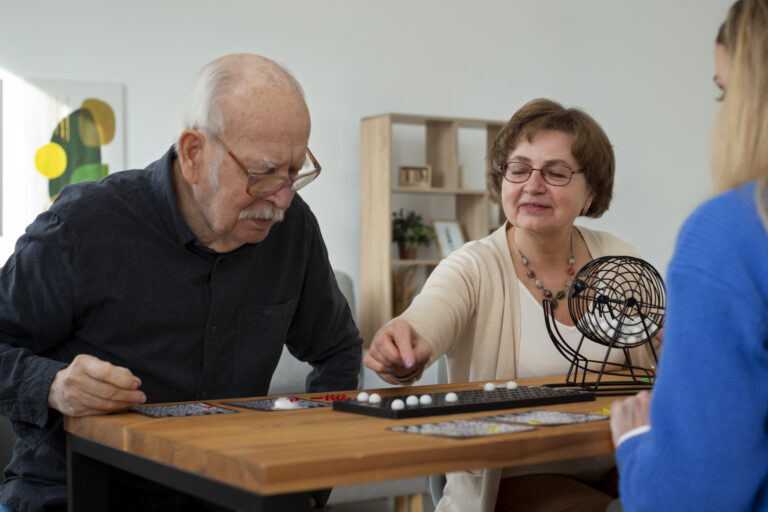Adapting to Change: Guide for Residents in Life Transitions
Adapting to change is a universal human experience. It’s especially poignant for residents transitioning into assisted living or memory care. This shift often involves significant changes—a new home, changing health, and evolving relationships. Supporting residents through these life transitions requires compassionate, person-centered care. It’s about helping residents not just survive change, but thrive.
Major life transitions can be especially challenging due to the complex, layered nature of these changes. It’s not just one factor—it’s a culmination of losses, adjustments, and new routines that make the process difficult. This journey is deeply personal, impacting each individual differently based on their personality and life history. Let’s explore how senior living communities, including assisted living in Abilene, can play a crucial role in helping residents acclimate and find comfort during these significant changes.
Table of Contents:
- Understanding the Challenges of Life Transitions
- Practical Strategies for Supporting Residents
- Facilitating Emotional Wellbeing During Transitions
- The Long-Term Benefits of Successful Transitions
- Conclusion
Understanding the Challenges of Life Transitions
Change can bring up different emotions. For seniors, these emotions can be amplified by everyday life transitions like moving or dealing with declining health. They may also be adjusting to shifts in their family dynamics.
As we get older, significant shifts become more common. Many people seek support and guidance during these challenging times.
Emotional and Psychological Impact
The emotional toll of transitions can be immense. The anticipation and excitement about a move may even involve eustress, a positive form of stress. Yet, it also involves the anxiety and sadness of leaving a familiar place behind.
This experience is tied to identity. When living situations shift, there can be a deep sense of disorientation. People can feel adrift.
Some might resist change altogether, digging in their heels to stay with the familiar. This is normal; it takes time. Show yourself compassion.
Social Connections and Support Systems
Social connections are crucial, perhaps even more so as we age. Often, transitions mean leaving established friend groups. This is a common life transition that many find emotionally challenging.
Assisted living facilities can become essential, fostering new connections. Residents should have access to staff, social events, and support groups. These opportunities promote inclusion. Expert counseling can also support positive adaptation as these transitions occur. Having family and professional networks is also essential.
Maintaining routines can be a great way to stay grounded during times of change. While most seniors want to remain at home, many retirees move. Whether to a senior living community, closer to children, or a downsized house, change is often inevitable.
Practical Strategies for Supporting Residents
Assisted living facilities can provide support to residents in many practical ways. Transitions of this scope are complex and multifaceted. This demands thoughtful responses.
Personalized Transition Plans
There’s no one-size-fits-all approach to personal transitions, as each individual’s experience is unique. Transitions should be tailored to residents’ needs, ensuring that their specific preferences and challenges are thoughtfully addressed.
Personalized transition plans address individual preferences and challenges. These plans can provide an organized process for managing the entire transition, involving staff, residents, and family.
Open communication among all parties helps ensure a smooth and positive experience. This also promotes a sense of belonging in the new environment.
Maintaining Familiar Routines and Creating New Ones
Adapting to change doesn’t mean abandoning the familiar. Keeping comforting routines—like a daily cup of tea at a certain time—provides stability.
Slowly incorporating new habits around these established rituals helps residents adjust. This can also include retirement, a significant transition that many seniors face.
This balanced approach allows residents to enjoy new activities and connections. It creates opportunities for personal growth within their new environment.
Creating a Welcoming Environment
Transitions are less intimidating when residents feel genuinely seen. A welcoming space helps soften the shift into assisted living.
The first impression is crucial and can color the entire transition experience. It can make the process smoother than imagined.
Fostering a positive initial experience sets the stage for long-term adjustment and well-being.
Facilitating Emotional Wellbeing During Transitions
Beyond daily adjustments, these life transitions impact mental well-being. This often requires deeper support. Navigating these changes can be challenging.
Providing Emotional Support and Resources
Everyone undergoing change needs safe spaces to express their feelings. Empathetic listeners make transitions much smoother.
Counselors and support groups can be crucial pillars of support. These professionals offer guidance and coping strategies.
Access to these resources empowers residents to navigate emotional processing during challenging periods.
Encouraging Self-Care and Wellness
As seniors settle into assisted living, offer self-care choices. Options might include exercise, mindfulness, and hobbies.
These activities help residents find enjoyment and physical well-being. Right-sizing can also be beneficial. It reduces the burden of excess possessions and promotes mindful living.
Assisted living settings must balance freedom with safety and dignity. This approach promotes overall well-being. This often involves navigating unexpected life transitions.
The Long-Term Benefits of Successful Transitions
Supporting residents goes beyond just adjusting. It contributes to a more fulfilling later life.
It helps residents embrace change and navigate various life transitions. These experiences can foster personal growth.
While this phase can be filled with change and sometimes grief, fostering resilience and planning ahead creates confidence. This empowers residents to face unexpected challenges. Finding ways to manage stress and include supportive routines, also assists in this area.
Improved Quality of Life
Planning and personalized transitions can enhance the quality of life. Downsizing a house into assisted living can free up time and energy for families. It reduces care burdens for relatives.
Practical support, like help with organizing affairs, is also valuable. This allows seniors to focus on enjoying their new environment.
These supportive spaces can offer a sense of relief and financial security. This can open up new opportunities for personal growth.
Enhanced Sense of Belonging and Purpose
Supporting residents involves creating spaces where they feel comfortable sharing. Building genuine connections fosters authentic inclusivity.
Being part of a community where residents feel valued can be transformative. It turns a potentially isolating experience into one filled with purpose and belonging.
This positive adaptation helps residents thrive in their new environment. They are empowered to embrace change with a positive outlook.
Conclusion
Adapting to change in senior living involves sensitivity and person-centered planning. Ongoing emotional support and respect are also essential.
Developing strategies that foster growth and fulfillment is key. This allows residents to live enriched lives. It enables them to navigate the changes and transitions that come with aging. This can include unexpected problems, like wellness care at home, or exploring new hobbies such as gardening.
Early planning provides security when help is needed. This proactive approach empowers residents to embrace change with confidence. It fosters resilience and a sense of control during life transitions.






